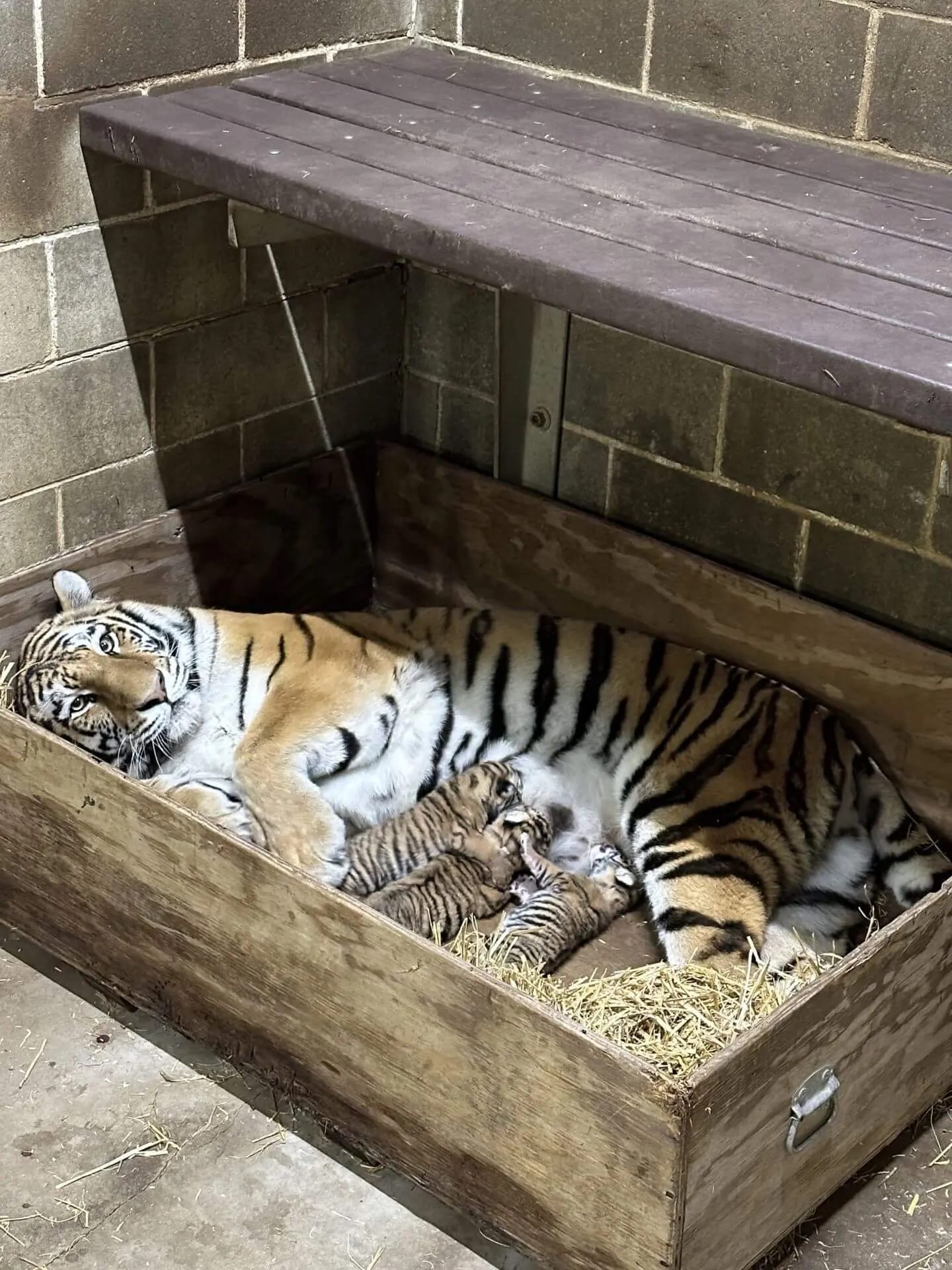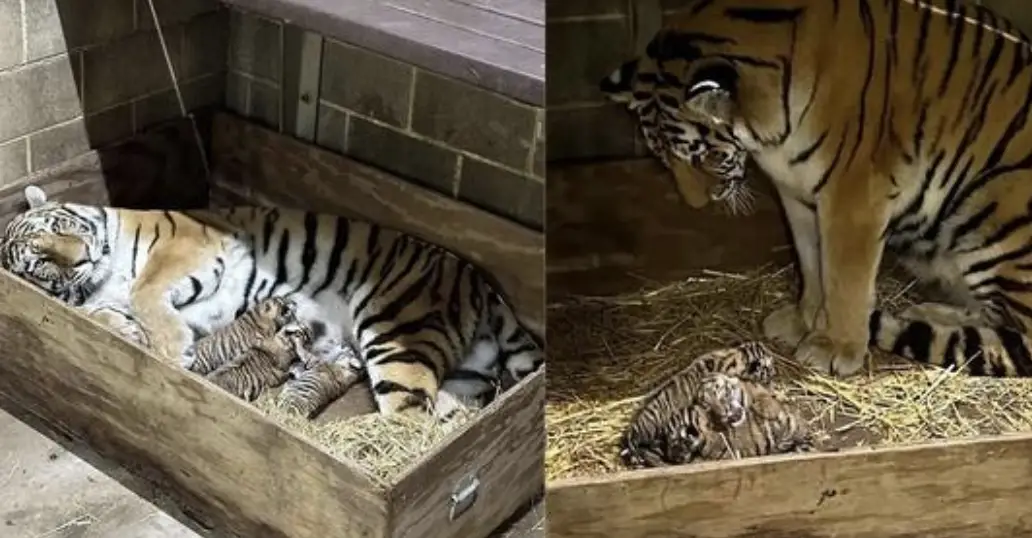The arrival of a newborn animal is always a cause for celebration, but it’s particularly momentous when the species is on the brink of extinction. Every birth is a vital contribution to the conservation of these precious creatures.
The Saint Louis Zoo recently shared some wonderful news: the birth of three Amur tiger cubs on November 13, marking a beacon of hope for one of the world’s most threatened big cat species.
The zoo’s press release introduced the cubs’ parents, Reka, a 5-year-old mother, and Maxim, an 11-year-old father. The new family is said to be thriving, with the mother and her cubs spending time in a secluded and peaceful maternity area within the zoo’s Big Cat Country exhibit.

The zoo, which is recognized by the Association of Zoos and Aquariums (AZA) and houses an impressive array of over 16,000 animals from 500 different species, mentioned that their Animal Care team is keeping a close eye on the tiger family through cameras. They’ve observed that Reka is a devoted mother, diligently grooming, nursing, and keeping her little ones cozy and warm. For now, the mother and her cubs will remain out of the public eye to ensure their well-being during these crucial early months, until the cubs are strong enough to explore their outdoor surroundings.
This event is particularly special as it’s the first time in more than ten years that Amur tiger cubs have been born at the St. Louis Zoo. The zoo is celebrating their arrival as a major boost to the population of Amur tigers in zoos across North America. Reka and Maxim were brought together following a breeding recommendation from the AZA’s Amur Tiger Species Survival Plan, and both joined the zoo in 2021.

The Amur tiger, previously known as the Siberian tiger, is on the brink of extinction, ranking as one of the world’s most critically endangered big cats. With fewer than 500 remaining in the wild, their situation is dire.
Historically, these tigers roamed across the vast expanse of Siberia and its neighboring regions, earning them the name Siberian tiger. However, due to relentless habitat destruction and poaching, their numbers have plummeted, and they have vanished from Siberia. Today, they are primarily found in the Russian Far East, near the Amur River, which has inspired their current name.
Given the scarcity of Amur tigers, breeding programs in captivity are vital to prevent the species from disappearing entirely. There’s a glimmer of hope as other zoos are also reporting breeding successes; for instance, the Cheyenne Mountain Zoo in Colorado Springs, Colorado, celebrated the birth of Amur tiger twins around Mother’s Day in May.

